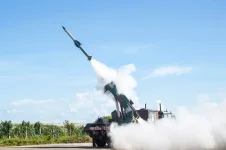Recent military engagements between India and Pakistan have significantly challenged the widely held belief in the supremacy of drones in modern conflict, with India's indigenous air defence capabilities reportedly neutralizing a large number of hostile Pakistani unmanned aerial vehicles.
"Operation Sindoor," initiated on May 7, 2025, following the Pahalgam terror incident on April 22 that resulted in 26 fatalities, has demonstrated the Indian Armed Forces' capacity to effectively counter sophisticated aerial threats.
A senior officer from the Army Air Defence (AAD) highlighted the operation's success, stating, "The operation not only safeguarded vital military and civilian infrastructure but also shattered the myth of drone supremacy. It has shown that Indian boots on the ground, backed by indigenous technology and rigorous training, can defend the skies with unmatched precision."
This report examines how India's locally developed systems and comprehensive training during Operation Sindoor have reshaped air defence paradigms in response to a significant drone offensive.
Operation Sindoor: Response and Retaliation
Operation Sindoor was a targeted military action against nine key terrorist launch sites in Pakistan and Pakistan-occupied Kashmir (PoK), undertaken in response to Pakistan-supported terrorism.Indian forces are said to have employed assets such as Rafale combat aircraft, BrahMos supersonic cruise missiles, SCALP long-range cruise missiles, HAMMER precision-guided munitions, and domestically developed loitering munitions to dismantle infrastructure associated with groups like Lashkar-e-Taiba, Jaish-e-Mohammad, and Hizbul Mujahideen.
In response, Pakistan have launched an extensive drone offensive, deploying over 1,000 unmanned aerial vehicles. This fleet allegedly included advanced armed drone swarms, Turkish-made Bayraktar TB2 drones (known for their combat effectiveness in other global conflicts), and various Chinese-manufactured models.
The objective of this large-scale drone deployment was reportedly to overwhelm India's air defence network, conduct intelligence gathering, and strike at both military and civilian targets.
India Thwarts Advanced Drone Offensive
Pakistan's counter-strategy appeared to hinge on the perceived strength of drone swarms, which are often difficult to detect due to their low radar cross-section and are intended to overwhelm defences through sheer numbers.However, this approach was met with a robust and multi-layered Indian air defence network. This network, significantly enhanced by indigenous technology and effective coordination between different branches of the armed forces, reportedly led to the failure of the drone offensive
According to reports, over 600 Pakistani drones were neutralized, while others were forced to retreat, resulting in no significant damage to Indian assets.
The AAD officer's claim that Operation Sindoor "shattered the myth of drone supremacy" underscores India's capacity to counter a technology that has been frequently described as a transformative element in contemporary warfare.
Drones, often praised for their cost-effectiveness, stealth capabilities, and operational flexibility, proved ineffective against India's comprehensive defence measures. The operation highlighted that sophisticated air defence systems, when combined with skilled personnel and strategic planning, can effectively nullify drone threats.
Indigenous Technology at the Forefront of Air Defence
India's reported success in this engagement is attributed to a meticulously designed air defence structure, creating what has been described as a "200-km-wide protective dome" extending inwards from the International Border.This layered defence integrated established systems, such as L-70 anti-aircraft guns, ZU-23mm twin-barrel guns, and modernised Schilka self-propelled anti-aircraft systems, with advanced indigenous platforms.
Key among these were the Akash surface-to-air missile system, designed to engage multiple aerial targets, and the Akashteer air defence control and reporting system.
To counter the drone threat, the Indian Army reportedly deployed more than 1,000 air defence gun systems and 750 short- and medium-range surface-to-air missile (SAM) systems. These assets were integrated into a comprehensive network of radars, enabling a rapid transition from a peacetime defensive posture to full operational readiness.
The Akashteer system, a product of the state-owned Bharat Electronics Limited (BEL), a leading Indian defence electronics company, was central to this defensive shield. It provided crucial real-time situational awareness and robust command-and-control capabilities.
By integrating with the Indian Air Force’s Integrated Air Command and Control System (IACCS), Akashteer allowed commanders to rapidly detect, track, and neutralize incoming aerial threats without endangering friendly aircraft.
The AAD officer further commented, "Akashteer’s digital backbone offered unmatched situational awareness and real-time command-and-control capabilities, enabling commanders to neutralize threats swiftly without risking friendly aerial platforms."
This successful large-scale neutralisation underscores a significant development in modern counter-drone warfare.








